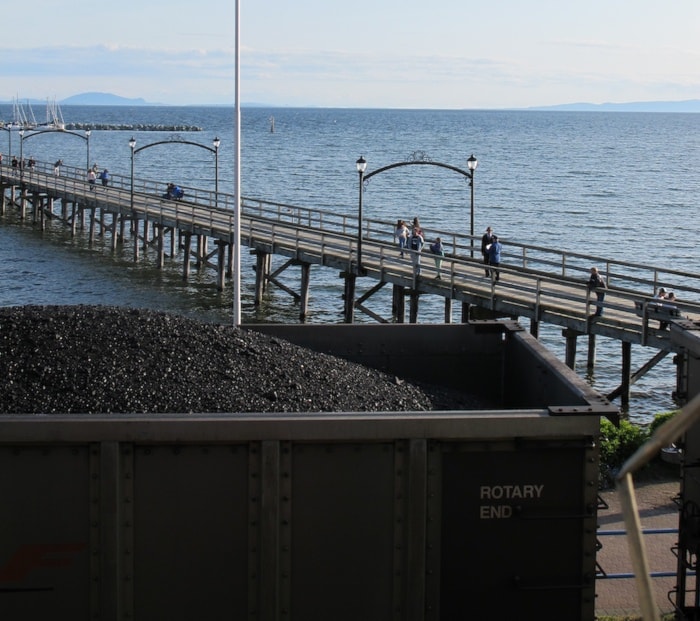Climate change activists predict a newly announced U.S. emissions crackdown will result in more American coal being carried by train through the Lower Mainland for export to overseas markets.
Anti-coal campaigner Kevin Washbrook said the U.S. goal of a 30 per cent cut in coal plant emissions over 25 years will gut already waning domestic demand for U.S. coal.
He said that will leave coal companies frantic to get their product overseas and increasingly looking north, because efforts to build new coal terminals have been stymied in Washington and Oregon.
"There's a huge amount of coal in the States and they're going to be desperate to ship it," Washbrook said. "We are right now the weakest link and the easiest route out."
Most coal moving through the Lower Mainland is metallurgical steel-making coal from B.C. mines in the Kootenays or the northeast.
The main destination is Westshore Terminals at Deltaport, where six coal trains arrive each day.
About two trains a day roll through White Rock and South Surrey on the BNSF railway carrying U.S. thermal coal to Westshore.
The other four trains a day come from B.C. mines and run along the CP or CN main lines in the Fraser Valley before following the Roberts Bank Rail Corridor through Langley, Cloverdale and Delta to Westshore.
Westshore vice-president Nick Desmarais said the terminal handled nearly 31 million tonnes of coal last year.
A $275-million upgrade is underway but he said it would result in only a "minimal" increase in annual capacity to around 35 million tonnes and said the company expects no short-term impact on its business from the U.S. decision.
"Coal opponents have been giving the impression it's going to be open sesame – that there's going to be all this U.S. thermal coal pouring into B.C.," said Coal Alliance spokesman Alan Fryer. "It seems to me that's going to be not the case."
He noted that even with the emissions cuts, the U.S. still expects 30 per cent of its electricity to come from burning coal in 2030.
"In terms of its impact on B.C., we don't feel it's going to be significant at all because there's limited capacity," Fryer said.
The other existing coal terminal is Neptune Terminals in North Vancouver, which takes two trains a day and has approval to expand to a capacity of 18 million tonnes per year, more than twice what it now ships.
Activists aim to block a new terminal proposed by Fraser Surrey Docks, which would bring an additional train per day via the BNSF line at its planned capacity of four million tonnes of U.S. thermal coal.
Washbrook said he fully expects the new coal terminal, if approved by Port Metro Vancouver, will be expanded further and could become a much larger shipping outlet, particularly if the Massey Tunnel is replaced with a bridge allowing ocean-going freighters upriver.
